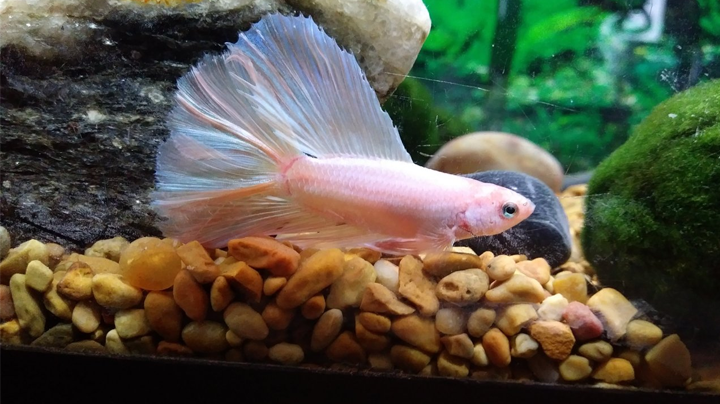Is it possible to have a hospital tank without a filter? The answer is yes, but there are a few things you need to take into consideration. First, you need to have a good-quality air pump and airstone. Second, you need to perform regular water changes. And third, you need to be very diligent about monitoring your water quality. If you can do all of these things, then you can successfully maintain a hospital tank without a filter.
Should A Quarantine Tank Have A Filter?
A quarantine tank is a critical tool for any fish keeper. It is used to isolate new fish and to treat sick fish. But what about the filter? Is a filter necessary in a quarantine tank?
There are pros and cons to having a filter in a quarantine tank. On the plus side, a filter can help to remove waste and keep the water quality high. This is important for the health of your fish. This is especially important if you’re keeping sensitive fish in your quarantine tank. On the downside, a filter can also spread disease if not properly maintained.
When it comes to setting up a quarantine tank, there are a few things to keep in mind. The most important thing to remember when setting up a quarantine tank is to completely clean and disinfect the tank and all of its components before adding any fish. This includes boiling or soaking all décor and gravel in a bleach solution, as well as scrubbing the inside of the tank with a bleach solution.
Without a filter, it is even more important to do a thorough cleaning as waste and uneaten food can quickly build up in the water, leading to poor water quality and potentially stressing or causing illness in your new fish.
Advantages of a Hospital Tank without a Filter
Here are some advantages of using a hospital tank without a filter:
- A hospital tank without a filter is easier to set up than a filtered tank. You don’t need to worry about installing and maintaining a filter, and you can use any type of tank you have available.
- A hospital tank without a filter can provide better water quality for your fish. Without a filter, there is less chance of contamination and your fish will have access to cleaner water.
- Having a hospital tank set up in advance can save time and stress when an ill fish needs to be removed from the main aquarium.
Disadvantages of a Hospital Tank without a Filter
There are several disadvantages to doing so
The biggest disadvantage is that the water quality can deteriorate quickly. This is because there will be no filtration to remove waste and toxins from the water. As a result, the fish in the hospital tank may become even sicker if they are not treated quickly.
Another disadvantage of not using a filter in a hospital tank is that it can be more difficult to maintain stable water conditions. This is because filtration helps to stabilize pH levels and keep ammonia and nitrite levels low. Without filtration, it may be more difficult to provide the optimal environment for healing fish.

What Fish can we keep in it?
There are several types of fish that can be kept in a hospital tank without a filter. The best fish for a hospital tank are those that are not very active and do not produce a lot of waste. Some good choices for hospital tanks include goldfish, bettas, and plecos.
Goldfish are a good choice for hospital tanks because they are relatively sedentary and do not produce a lot of waste. They are also quite hardy and can tolerate less-than-ideal water conditions. Betas are another good choice for hospital tanks as they are also relatively sedentary and do not produce much waste.
What Fish can’t keep in it?
The worst fish for a filterless hospital tank include:
If you’re looking for the worst fish to put in a filterless hospital tank, look no further than these three. The common pleco (Hypostomus plecostomus), the clown loach (Chromobotia macracanthus), and the African Dwarf Frog (Hymenochirus boettgeri) are all terrible choices for a number of reasons.
First, plecos are extremely messy eaters and produce a lot of waste. This waste can quickly foul up a hospital tank that doesn’t have a filter to remove it. Second, clown loaches get very large (up to 12 inches in length) and are very active swimmers. This means they need a lot of space to live comfortably, which a hospital tank simply can’t provide.
How Long Can Fish Survive Without a Filter?
Fish are often thought of as low-maintenance pets that can go for long periods of time without needing attention. However, this is not the case when it comes to filtration. Aquariums need filters to maintain clean water conditions and keep fish healthy. But how long can fish survive without a filter?

Under optimal conditions, most fish can survive for a few days without a filter. However, if the tank is overcrowded or the water quality is poor, fish may start to experience health problems after just a day or two without filtration. Ammonia and nitrite levels will begin to rise, and oxygen levels will decrease, leading to stress and illness in fish.
What does a Filter do?
A filter is a critical part of any fish tank. It helps to keep the water clean and clear, and it also provides a place for beneficial bacteria to grow. There are several different types of filters, but all of them serve the same basic purpose.
Without a filter, your fish tank would quickly become dirty and dangerous for your fish. The filter removes harmful ammonia and nitrites from the water, as well as excess food and debris. It also oxygenates the water and creates circulation within the tank.
The beneficial bacteria that live in the filter help to break down waste products in the water, which further improves water quality. A properly functioning filter is essential for a happy and healthy fish tank!
How Can We Keep The Hospital Tank Clean Without A Filter?
Aquariums are a beautiful addition to any home, and many people enjoy the relaxation that comes with watching the fish swim. However, keeping an aquarium can be a lot of work, and one of the most important parts of aquarium maintenance is keeping the tank clean.
There are a few different ways to keep your tank clean without using a filter.
One way is to do partial water changes regularly. This means draining out some of the water and replacing it with fresh, clean water. You should do partial water changes every week or two, depending on the size of your tank and the number of fish you have.
Another way to keep your tank clean is to vacuum the gravel regularly. This helps remove any uneaten food or waste that has sunk to the bottom of the tank.
Do not overfeed the fish. This will create less waste and fewer opportunities for ammonia and nitrites to build up in the water.
Perform regular water changes. At least 25% of the water should be replaced each week. Finally, use an air stone or powerhead to circulate the water and help aerate it.
How Often Should I Change Water in a Filterless Tank?
A filterless tank is a great option for those who don’t want to deal with the hassle of changing water filters. However, even though you don’t have to change the filter, you still need to change the water on a regular basis. How often you need to change the water will depend on a few factors, such as how many fish are in the tank and how often you feed them. A good rule of thumb is to change about 20% of the water every week.

Tips to Maintain the Hospital Tank
If you are like most people, you probably don’t give much thought to the hospital tank in your home. However, if you have fish, it is important to maintain a healthy environment for them. Here are some tips to help you keep your hospital tank clean and free of harmful bacteria:
Change the water regularly:
This is the most important thing you can do to keep your hospital tank clean. Depending on the size of your tank and the number of fish in it, you may need to change the water daily or every other day.
Clean the gravel:
Gravel can harbor all sorts of bacteria and parasites, so it’s important to clean it regularly. A good way to do this is to vacuum it with a siphon hose.
Using a sponge filter:
Using a sponge filter is often the best option. Sponge filters are easy to maintain and provide excellent filtration for the hospital tank.
Replace the sponge regularly. Depending on the size of your sponge filter, you will need to replace it every few weeks to a few months. A good rule of thumb is to replace the sponge when it starts to fall apart or lose its shape. Clean the sponge regularly.
Avoid overstocking:
Don’t overstock the tank. Only put as many fish in as it can comfortably accommodate.
This will help to keep the water quality high and prevent any potential problems. It is also important to keep the tank clean and free of any debris.
Avoid filters and other equipment with active carbon:
A good filter will remove harmful bacteria and other contaminants from the water, making it safer for the fish. However, filters can also remove some of the beneficial bacteria that are essential for the health of the tank.
To avoid this, it is important to maintain the hospital tank without a filter. This can be done by using a piece of equipment called an active carbon filter. Active carbon filters remove all of the beneficial bacteria from the water, leaving only the harmful bacteria behind.
Avoid decorations:
Don’t use any decorations in the hospital tank. This will make it easier to clean the tank and keep the water quality high. Second, use a small hospital tank.
Use a small hospital tank:
A smaller tank is easier to clean and maintain than a larger one. Finally, check the water quality regularly and change the water frequently.
Ozone generator:
Another way to avoid filters is to use a product called an ozone generator. Ozone generators kill all of the bacteria in the water, both good and bad. This leaves the hospital tank with only clean, safe water for the fish.
Avoid adding substrate:
This is because substrate can harbor harmful bacteria that can infect your fish. Instead, use a bare bottom tank or line the bottom of the tank with paper towels.
Avoid overfeeding:
Don’t overfeed the fish. Only give them as much food as they can eat in one sitting.
Use an air pump:
This will help circulate the water and keep the oxygen levels high.

Final Words
In conclusion, it is possible to have a hospital tank without a filter. However, it is not recommended as it is more difficult to maintain water quality and stability without a filter. A hospital tank should only be used as a temporary solution for sick or injured fish. If you are considering setting up a hospital tank, make sure to do your research and consult with a qualified aquarium professional to set up the best possible environment for your fish.
Also read: Ways to Clean Aquarium Filter Without Killing Bacteria







